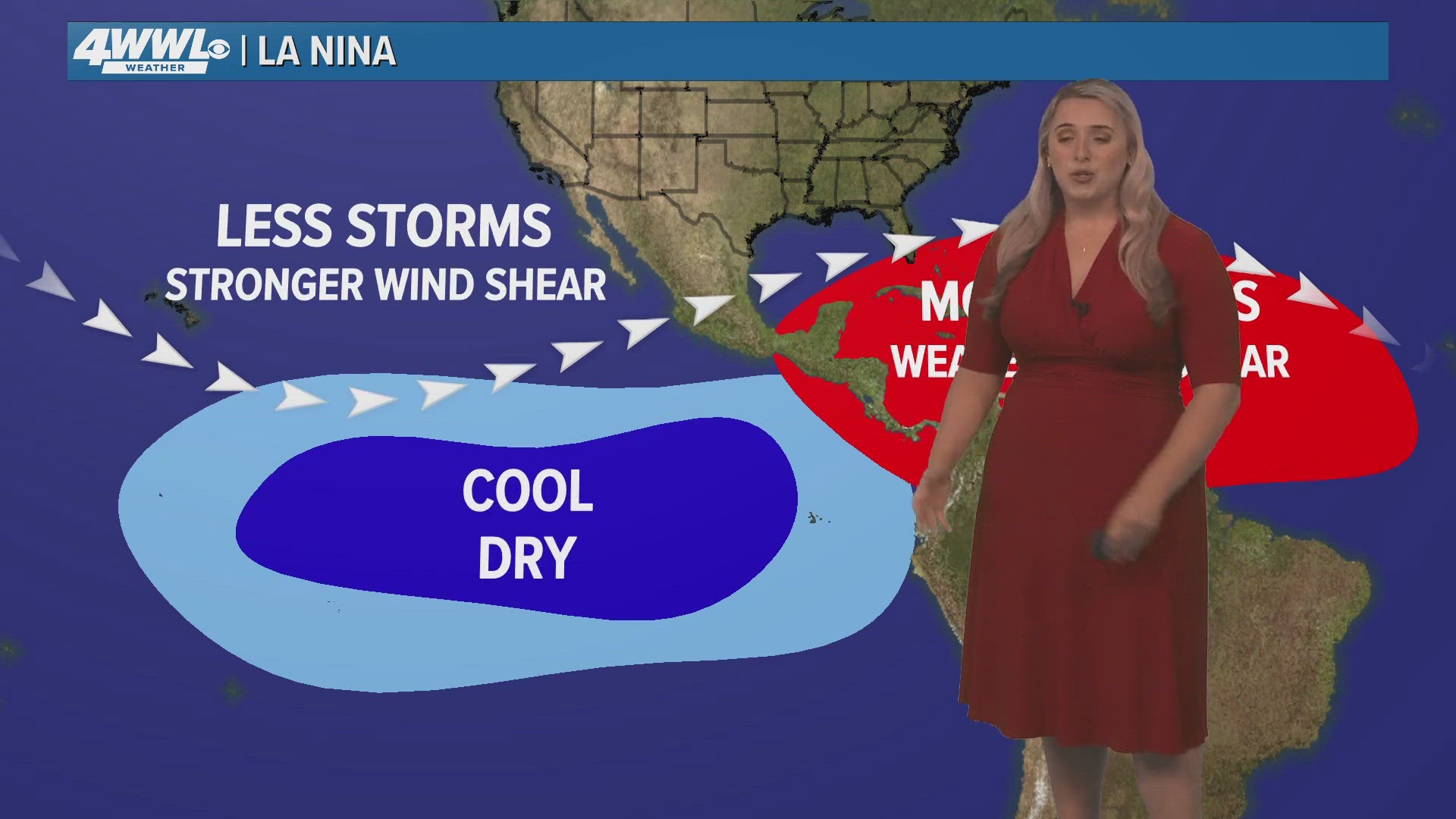NEW ORLEANS — In Southeast Louisiana, we’re no strangers to hurricanes.
“We have had a lot of experience with hurricanes down here,” St. Bernard Parish Department of Homeland Security Director John Rahaim said.
This season could be busier than usual.
“It doesn’t matter if it’s a busy hurricane season or just one. If it’s the right one, it’ll get us,” Rahaim said.
On Monday, the National Weather Service released record-breaking storm projections. The numbers indicate we could see up to thirteen hurricanes, almost double the average for the Atlantic Basin.
What makes this year different? WWL Meteorologist Payton Malone says mother nature is checking all of the boxes, including record sea surface temperatures, La Nina, and an active African Monsoon.
“Those are all the seeds for big storms,” Malone said. “During the busy season, we’re expecting most of those; all those boxes are checked, and that’s why you’re seeing these big numbers.”
With twenty-five storms already named, city and state officials tell us the time to prepare is right now.
“Do not wait until June just because it’s the first day of hurricane season,” Rahaim said.
First off, put together a hurricane kit, including water, non-perishable foods, a flashlight, and a radio. You’ll need to have these things on hand if you lose power.
“Make sure that you check your hurricane prep list, and we’ll put some PSAs out,” Louisiana Governor Jeff Landry said.
Next, make a game plan. If directed to shelter in place, have that place in mind now. Should you be directed to evacuate, decide where you’ll go and how you’re going to
“We tell people, try to go to a family, try to go to a friend,” National Weather Service Meteorologist Lauren Nash said. “If you can afford to go to a hotel, go there.”
Waiting until the last minute to prep could have serious consequences.
"Mother nature knows no time calendar. She does what she wants when she wants,” Rahaim said.
These items are recommended for your hurricane-ready kit:
- Water. One gallon per person per day, for at least 3 days, for drinking and hygiene
- Food. At least a 3-day supply of non-perishable food
- Click here for recipe ideas featuring non-perishable foods, manual tools and alternative heating sources.
- Can opener. For food, if kit contains canned food
- Radio. Battery-powered or hand crank radio and a NOAA Weather Radio with tone alert, and extra batteries for both
- Emergency charger for mobile devices
- Flashlight and extra batteries
- First aid kit
- Whistle. To signal for help
- Face mask. To help filter contaminated air and plastic sheeting and duct tape to shelter in place
- Moist towelettes, garbage bags and plastic ties. For personal hygiene
- Wrench or pliers. To turn off utilities
- Local maps
ADDITIONAL ITEMS
- Prescription medications and glasses
- Infant formula and diapers
- Pet food, extra water, pet supplies, toys and vaccination forms.
- Important family documents such as copies of insurance policies, identification and bank account records in a waterproof, portable container
- Cash or traveler’s checks and change
- Emergency reference material such as a first aid book
- Sleeping bag or warm blanket for each person. Consider adding bedding in cold weather.
- Complete change of clothing. Include a long sleeved shirt, long pants and sturdy shoes. Consider adding clothing in cold weather.
- Household chlorine bleach and medicine dropper
- Fire extinguisher
- Matches in a waterproof container
- Feminine supplies and personal hygiene items
- Mess kits, paper cups, plates, plastic utensils and paper towels
- Paper and pencil
- Books, games, puzzles or other activities for children.
► Get breaking news from your neighborhood delivered directly to you by downloading the new FREE WWL-TV News app now in the IOS App Store or Google Play.

